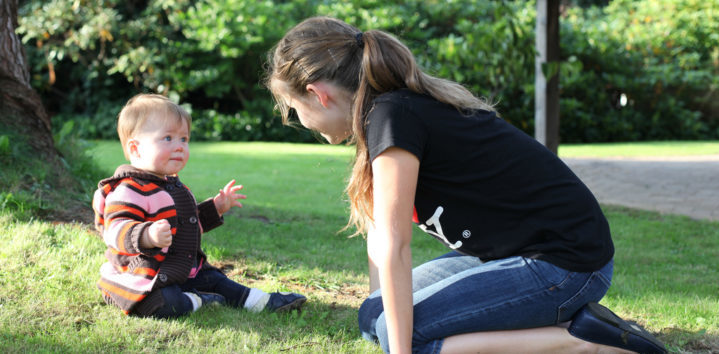
I am relearning, once again, some powerful lessons about communication. And I am learning them from our infant daughter.
Our daughter is rapidly approaching her first birthday, and is doing all the things you would expect her to be doing. Crawling around, getting into things she shouldn’t, making all sorts of sounds, screaming when she needs food or a fresh diaper. She is completely transparent and literal in her communication. We never have to translate anything, because the things an infant cares about are pretty straightforward. If they are unhappy, it can really only be one of a few things: they are either hungry, tired, bored or dirty. Not a lot of nuance there.
But that is just what she communicates to us.
What amazes me daily is how she perceives the things we communicate to her. She isn’t speaking yet, obviously, but she understands a lot of what we communicate in her direction. We think she is starting to understand some words. But more importantly, she understands all the other ways in which a human communicates. She responds to facial expression, tone of voice, and body language. She can tell when we are happy and she reacts accordingly. She can tell when something is wrong or we want her to stop doing something, and she also reacts accordingly. Just today, she was crawling towards something we did not want her to touch, and I said, in a stern voice, “no touch.” And she stopped immediately in mid-crawl, swiveled up to a seated position, and stared at me. She knew I did not want her to touch that thing. (The “b” case, however, is that after our several-moments-long stare, she then went right back to where she was headed. She understood me. She just chose to ignore me.)
I wrote about this theme a few times years ago, when our son was a similar age. And I am relearning once again some of the things I relearned then. That the things we communicate go well beyond words. We communicate so much in our body language, facial expression, tone, eye contact (or lack thereof). Human beings pick up an enormous amount of communicated information through non-verbal things. We all know this, and yet every day, my colleagues and I see people who are not nearly enough aware of the non-verbal things they communicate.
My point here is two-fold. The best communicators are acutely aware of their own non-verbal communication, and they bring their entire selves into the conversation. And secondly, the best listeners are acutely aware of the non-verbal communication of others, and pay close attention to not only what is said, but also what is not said, and the way in which things are said or not said.
Be aware of the power of non-verbal communication, in both directions… from you towards others and from others towards you. There is an entire world out there, waiting to be interpreted.
(As my infant daughter is learning right now, every day.)
Have a great day!






Comments